The Householder Lecture Series is sponsored jointly by the Mathematics in Computation Section at Oak Ridge National Laboratory and the Department of Mathematics at the University of Tennessee, Knoxville. The purpose of the lecture is to have distinguished mathematicians present research on various topics in computational and applied mathematics. The series began in 2014 and is held twice per year, alternating each time between the two institutions.
The lecture series honors Dr. Alston S. Householder, who spent the majority of his career in the Mathematics Division at Oak Ridge National Laboratory (now the Computational Science and Mathematics Division), serving as the director for much of that time, before joining the Department of Mathematics at the University of Tennessee. Householder specialized in mathematical biology and numerical analysis. He is best known as the inventor of the Householder transformation in linear algebra and the root-finding algorithm known as Householder's method, as the founding organizer of the Gatlinburg Symposium on Numerical Linear Algebra (now called the Householder symposium), and as the author of the textbook The Theory of Matrices in Numerical Analysis (1961). Householder also published the monograph Mathematical Biophysics of the Central Nervous System (1946) and the book Principles of Numerical Analysis (1953). He served as president of the Association for Computing Machinery (1954-1956) and the Society for Industrial and Applied Mathematics (1963-1964).
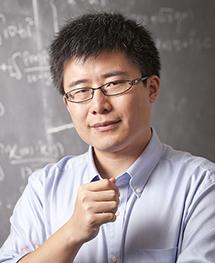
Jianfeng Lu
Numerical Methods for High Dimensional Control Problems and Hamilton-Jacobi-Bellman Type PDEs
April 30, 2025
Abstract: In this talk, we will discuss some recent progress in numerical approaches to solve high dimensional Hamilton-Jacobi-Bellman (HJB) type partial differential equations (PDEs). The HJB PDEs, reformulated as optimal control problems, are tackled by the actor-critic framework inspired by reinforcement learning, based on neural network parametrization of the value and control functions. Within the actor-critic framework, we employ a policy gradient approach to improve the control, while for the value function, we derive a variance reduced least-squares temporal difference method using stochastic calculus. We will also discuss about approximation theory of the solutions in high dimension by neural networks, and convergence analysis for the actor-critic method, in particular the policy gradient method. Based on joint works with Ye Feng (Duke), Jiequn Han (Flatiron Institute), and Mo Zhou (UCLA).
Biography: Jianfeng Lu is a James B. Distinguished Professor of Mathematics, Physics, and Chemistry at Duke University. Before joining Duke University, he obtained his PhD in Applied Mathematics from Princeton University in 2009 and was a Courant Instructor at New York University from 2009 to 2012. He works on mathematical analysis and algorithm development for problems and challenges arising from computational physics, theoretical chemistry, materials science, high-dimensional PDEs, and machine learning. He is a fellow of AMS. His work has been recognized by a Sloan Fellowship, an NSF Career Award, the IMA Prize in Mathematics and its Applications, and the Feng Kang Prize.
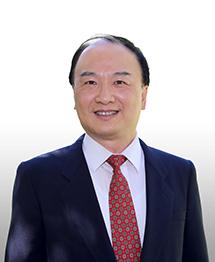
Thomas Yizhao Hou
Potentially singular behavior of
3D incompressible Navier-Stokes equations
September 5, 2024
Abstract: Whether the 3D incompressible Navier-Stokes equations can develop a finite time singularity from smooth initial data is one of the most challenging problems in nonlinear PDEs. In this talk, I will present some numerical evidence that the 3D Navier-Stokes equations develop nearly self-similar singular scaling properties with maximum vorticity increased by a factor of $10^7$. This potentially singular behavior is induced by a potential finite time singularity of the 3D Euler equations. Unlike the Hou-Luo blowup scenario, the potential singularity of the 3D Euler and Navier-Stokes equations occurs at the origin. We have applied several blowup criteria to study the potentially singular behavior of the Navier-Stokes equations. The Beale-Kato-Majda blow-up criterion, the blowup criteria based on the growth of enstrophy and negative pressure, the Ladyzhenskaya-Prodi-Serrin regularity criteria all seem to imply that the Navier-Stokes equations develop potentially singular behavior. Finally, we present some new numerical evidence that a variant of the axisymmetric Navier-Stokes equations with time dependent fractional dimension develops nearly self-similar blowup with maximum vorticity increased by a factor of $10^{30}$.
Biography: Thomas Yizhao Hou is the Charles Lee Powell professor of applied and computational mathematics at Caltech. His research interests include 3D Euler singularity, interfacial flows, multiscale problems, and adaptive data analysis. He received his Ph.D. from UCLA in 1987, and became a tenure track assistant professor at the Courant Institute in 1989, and a tenured associate professor in 1992. He moved to Caltech in 1993 and was named the Charles Lee Powell Professor in 2004. Dr. Hou has received a number of honors and awards, including Member of the National Academy of Sciences in 2024, Fellow of American Academy of Arts and Sciences in 2011, a member of the inaugural class of SIAM Fellows in 2009 and AMS Fellows in 2012, the William Benter Prize in Applied Mathematics in 2024, the SIAM Ralph E. Kleinman Prize in 2023, the SIAM Outstanding Paper Prize in 2018, the SIAM Review SIGEST Award in 2019, the Computational and Applied Sciences Award from USACM in 2005, the Morningside Gold Medal in Applied Mathematics in 2004, the SIAM Wilkinson Prize in Numerical Analysis and Scientific Computing in 2001, the Frenkiel Award from the Division of Fluid Mechanics of American Physical Society in 1998, the Feng Kang Prize in Scientific Computing in 1997, a Sloan fellow from 1990 to 1992. He was also the founding Editor-in-Chief of the SIAM Journal on Multiscale Modeling and Simulation from 2002 to 2007.
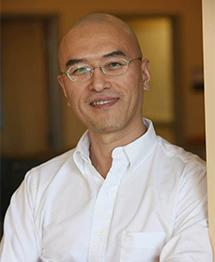
Chun Liu
Energetic Variational Approach in General Diffusion: Boundary and Thermal Effects
November 6, 2019
Abstract: Most biological activities involve transport and distribution of ions and charged particles in complicated biological environments. The coupling and competition between different ionic solutions in various biological environments provide the mechanism of the relevant specificities and selectivities in these systems. These systems are often associated with special biological and chemical conditions, such as the high concentration of specific species in solutions, which make most of the “ideal” assumptions in classical and conventional approaches irrelevant or unsuitable in the studies of biological problems.
In the talk, I will explore the underlying mechanism governing various diffusion processes. We will employ a general framework of energetic variational approaches, consisting of in particular, Onsager’s Maximum Dissipation Principles, and their specific applications in biology and physiology. I will discuss several extended general diffusion systems motivated by the study of ion channels and ionic solutions in biological cells. In particular, I will focus on our recent results in studying the interactions between different species, the boundary effects and in some cases, the thermal effects.
Biography: Chun Liu is the Chair and Professor in the Department of Applied Mathematics in Illinois Institute of Technology in Chicago. Before coming to Illinois Tech, Liu was in the Department of Mathematics at Pennsylvania State University, where he had served since 1998. He also served a term as associate director for the Institute for Mathematics and Its Applications (IMA) at the University of Minnesota, and has held positions at many institutions, such as the University of Wuerzburg, the University of Tokyo, the University of Georgia, and Carnegie Mellon University. He received his Ph.D. in 1995 from the Courant Institute of Mathematical Sciences at New York University.
Liu’s research is in nonlinear partial differential equations and applications in complex fluids, such as liquid crystal growth, polymers, and ion channels in cell membranes. He developed a general framework of energetic variational approaches (EnVarA) to study various problems arising from physical and biological applications. Liu’s research has been supported by various federal and international funding agencies.
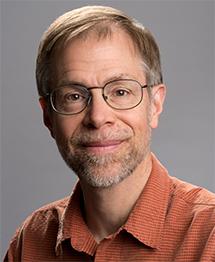
James Demmel
Communication-avoiding Algorithms for Linear Algebra, Machine Learning and Beyond
February 20, 2019
Abstract: Algorithms have two costs: arithmetic and communication, i.e. moving data between levels of a memory hierarchy or processors over a network. Communication costs (measured in time or energy per operation) already greatly exceed arithmetic costs, and the gap is growing over time following technological trends. Thus our goal is to design algorithms that minimize communication. We present new algorithms that communicate asymptotically less than their classical counterparts, for a variety of linear algebra and machine learning problems, demonstrating large speedups on a variety of architectures. Some of these algorithms attain provable lower bounds on communication. We describe a generalization of these lower bounds and optimal algorithms to arbitrary code that can be expressed as nested loops accessing arrays, assuming only that array subscripts are affine functions of the loop indices, a special case being convolutional neural nets.
Biography: James Demmel is the Dr. Richard Carl Dehmel Distinguished Professor of Computer Science and Mathematics at the University of California at Berkeley, and Chair of the EECS Department. His research is in numerical linear algebra, HPC, and communication avoiding algorithms. He is known for his work on the LAPACK and ScaLAPACK linear algebra libraries. He is a member of the NAS, NAE, and American Academy of Arts and Sciences; a Fellow of the AAAS, ACM, AMS, IEEE and SIAM; and winner of the IPDPS Charles Babbage Award, IEEE Computer Society Sidney Fernbach Award, the ACM Paris Kanellakis Award, and numerous best paper prizes.
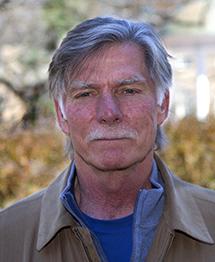
M. Gregory Forest
An emerging mechanistic paradigm for self-organization and functional properties of biological materials: the power of weak binding
November 16, 2018
Abstract: With mounting data from super-resolution microscopy of biological systems, new insights into underlying mechanisms of self-organization and diverse functional properties are emerging. Biological materials within living species must be adaptive and responsive, and rapidly recover when driven out of equilibrium. This lecture will focus on a diversity of biological materials, performing disparate functions and tasks, all sharing a common mechanism: transient, short-lived binding kinetics of ensembles of molecular anchors. Each material system is explored through feedback between experimental data, data analytics, mechanistic modeling and computation, real and virtual visualization. Many collaborators and contributors will be acknowledged during the lecture.
Biography: M. Gregory (Greg) Forest is an applied mathematician at University of North Carolina (UNC) Chapel Hill. His early career was devoted to integrable and nearly integrable nonlinear wave equations, focusing on multiphase wave trains and their perturbative behavior. He developed interests in polymer science while at Ohio State University, with applications to inkjet printing, textile spinlines, flowing liquid crystals, and nanocomposites, interests which continue today. Since moving to UNC, Forest has developed interests in biology and multidisciplinary collaborations including the Virtual Lung Project aimed at engineering solutions for lung disease, the dynamics and structure of chromosomal DNA in live cells, antibody-pathogen interactions in mucosal barriers, and membrane-less compartments in the cytoplasm and nucleus that form by phase separation induced by transient chemical kinetics.
Professor Forest is currently the Grant Dahlstrom Distinguished Professor of Mathematics at UNC and Director of the Carolina Center for Interdisciplinary Applied Mathematics. He holds joint appointments in the Department of Applied Physical Sciences and the Department of Biomedical Engineering. In 2012, Forest was elected a Fellow of the Society of Industrial and Applied Mathematics (SIAM).
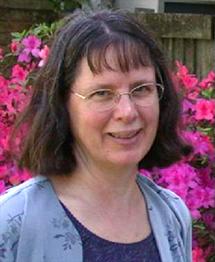
Dianne P. O'Leary
One Picture and a Thousand Words, Using Matrix Approximations
October 25, 2017
Abstract: Matrix approximation is a well-studied area of mathematics, but despite the attention it has received, many open questions remain involving existence, uniqueness, extensions to tensors, and efficient computation. The focus in this talk is on matrix approximation problems constrained in rank, sparsity, and nonnegativity, including a novel approach to uncertainty in matrix entries. Applications to deblurring pictures (images) and to document classification will be discussed.
Biography: Dianne Prost O'Leary is a Distinguished University Professor, emerita, at the University of Maryland, who held appointments in the university's Computer Science Department, Institute for Advanced Computer Studies (UMIACS), and Applied Mathematics & Statistics and Scientific Computing Program. She earned a B.S. from Purdue University and a Ph.D from Stanford University. Her research is in computational linear algebra and optimization, with applications including solution of ill-posed problems, image deblurring, information retrieval, and quantum computing. She has authored over 100 research publications on numerical analysis and computational science and 30 publications on education and mentoring. She has served on the editorial boards of many journals, including two terms as editor-in-chief of SIAM Journal on Matrix Analysis and Applications. She is a member of AWM and a Fellow of SIAM and ACM. She was awarded a Doctor of Mathematics degree, honoris causa, from the University of Waterloo in 2005 and was chosen to be the 2008 AWM-SIAM Sonia Kovalevsky Lecturer. Further information about her work can be found at http://www.cs.umd.edu/users/oleary.
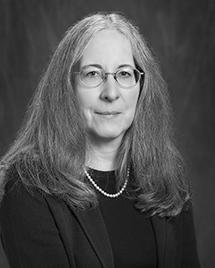
Susanne C. Brenner
Two Lectures
April 27 and 28, 2017
Lecture 1
Computational Mathematics
April 27, 2017
Abstract: This is a general talk about computational mathematics. We will trace its fascinating history from ancient times to modern day in terms of people, machines and algorithms. We will discuss the goals and practices of computational mathematics, and the challenges and opportunities that it provides.
Lecture 2
Finite Element Methods for Fourth Order Elliptical Variational Inequalities
April 28, 2017
Abstract: Fourth order elliptic variational inequalities appear in obstacle problems for Kirchhoff plates and optimization problems constrained by second order elliptic partial differential equations. The numerical analysis of these variational inequalities is more challenging than the analysis in the second order case because the complementarity forms of fourth order variational inequalities only exist in a weak sense. In this talk we will present a unified framework for the a priori analysis of finite element methods for fourth order elliptic variational inequalities that are applicable to C1 finite element methods, classical nonconforming finite element methods, and discontinuous Galerkin methods.
Biography: Susanne C. Brenner is the Nicholson Professor of Mathematics at Louisiana State University. She has authored more than 100 research articles and she is the coauthor of the graduate text The Mathematical Theory of Finite Element Methods. In 2005 she received a Humboldt Research Award for her contributions to finite element analysis and fast solution techniques. She is the managing editor of Mathematics of Computation and she has also served on the editorial board of many other journals. She is a Fellow of the American Association for the Advancement of Science, the American Mathematical Society and the Society for Industrial and Applied Mathematics.
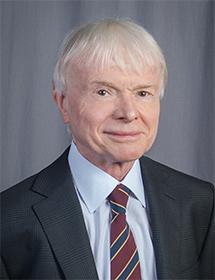
Thomas J.R. Hughes
Isogeometric Analysis: Past, Present, and Future
March 8 and 9, 2016
Abstract: October 1, 2015 marked the tenth anniversary of the appearance of the first paper [1] describing my vision of how to address a major problem in Computer Aided Engineering (CAE). The motivation was as follows: Designs are encapsulated in Computer Aided Design (CAD) systems. Simulation is performed in Finite Element Analysis (FEA) programs. FEA requires the conversions of CAD descriptions to analysis-suitable formats form which finite element meshes can be developed. The conversion process involves many steps, is tedious and labor intensive, and is the major bottleneck in the engineering design-through-analysis process, accounting for more than 80% of overall analysis time, which remains an enormous impediment to the efficiency of the overall engineering product development cycle.
The approach taken in [1] was given the pithy name Isogeometric Analysis. Since its inception it has become a focus of research within both the fields of FEA and CAD and is rapidly becoming a mainstream analysis methodology and a new paradigm for geometric design [2]. The key concept utilized in the technical approach is the development of a new and expanded framework for FEA, based on rich geometric descriptions originating in CAD, resulting in a single geometric model that serves as a basis for both design and analysis.
In these talks I will describe areas in which progress has been made in developing improved Computational Mechanics methodologies to efficiently solve vexing problems that have been at the very least difficult, if not impossible, within traditional FEA. I will also present what is known mathematically about IGA, and discuss areas of intense current activity, in which problems remain open, representing both challenges and opportunities for future research (see, e.g., [3]).
[1] T.J.R. Hughes, J.A. Cottrell and Y. Bazilevs, Isogeometric Analysis: CAD, Finite Elements, NURBS, Exact Geometry and Mesh Refinement, Computer Methods in Applied Mechanics and Engineering, 194, (2005) 4135-4195.
[2] J.A. Cottrell, T.J.R. Hughes and Y. Bazilevs, Isogeometric Analysis: Toward Integration of CAD and FEA, Wiley, Chichester, U.K., 2009.
[3] Isogeometric Analysis Special Issue (eds. T.J.R. Hughes, J.T. Oden and M. Papadrakakis), Computer Methods in Applied Mechanics and Engineering, 284, (1 February 2015), 1-1182.
Biography: Thomas J.R. Hughes holds B.E. and M.E. degrees in Mechanical Engineering from Pratt Institute and an M.S. in Mathematics and Ph.D. in Engineering Science from the University of California at Berkeley. He taught at Berkeley, Caltech and Stanford before joining the University of Texas at Austin in 2002. He is an elected member of the US National Academy of Sciences, the US National Academy of Engineering, the American Academy of Arts and Sciences, the Academy of Medicine, Engineering and Science of Texas, and a Foreign Member of the Royal Society of London, the Austrian Academy of Sciences, and the Istituto Lombardo Accademia di Scienze e Lettere. Dr. Hughes has received honorary doctorates from the universities of Louvain, Pavia, Padua, Trondheim, Northwestern, and A Coruña.
Dr. Hughes is one of the most widely cited authors in Engineering Science. He has received the Huber Prize and Von Karman Medal from ASCE, the Timoshenko, Worcester Reed Warner, and Melville Medals from ASME, the Von Neumann Medal from USACM, the Gauss-Newton Medal from IACM, the Computational Mechanics Award of the Japan Society of Mechanical Engineers, the Grand Prize from the Japanese Society of Computational Engineering and Sciences, the Computational Mechanics Award of the Japanese Association for Computational Mechanics, the Humboldt Research Award for Senior Scientists from the Alexander von Humboldt Foundation, the AMCA Award for an International Scientific Career from the Argentinian Association for Computational Mechanics, and the Wilhem Exner Medal from the Austrian Association für SME (Öesterreichischer Gewerbeverein, OGV). The Special Achievement Award for Young Investigators in Applied Mechanics is an award given annually by the Applied Mechanics Division of ASME. In 2008 this award was renamed the Thomas J.R. Hughes Young Investigator Award. In 2012 the Computational Fluid Mechanics Award of the United States Association of Computational Mechanics was renamed the Thomas J.R. Hughes Medal.
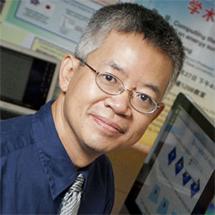
Quiang Du
Application of Householder transform to transition state search
October 30, 2015
Abstract: Finding transition states on a complex energy landscape is an
interesting computational problem that appears in many applications.
This lecture will discuss how Householder transform plays a useful
role in the design of robust algorithms for effective transition
state search. Rigorous mathematical analysis of such algorithms
will be presented along with some discussion on various applications.
Biography: Dr. Du earned Ph.D. in Mathematics (1988) from Carnegie Mellon University, after which he has held faculty positions at University of Chicago, Michigan State University, Iowa State University, and Hong Kong University of Science and Technology. Dr. Du was most recently the Verne M. Willaman Professor of Mathematics and Professor of Materials Science and Engineering at Penn State University. Recognitions for Dr. Du's work include the Frame Faculty Teaching Award (1992) at Michigan State University, the Liberal Arts and Sciences Award for outreach/extension (2000), the Feng Kang prize in scientific computing (2005), the Eberly College of Science Medal (2007) from Penn State University, and his selection as a 2013 SIAM Fellow for contributions to applied and computational mathematics with applications in materials science, computational geometry, and biology.
Dr. Du's research interests are in numerical analysis, mathematical modeling and scientific computation with selected applications in physical, biological, materials, data and information sciences.
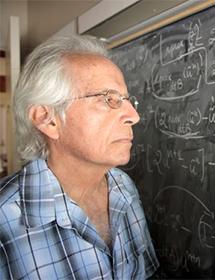
Stanley Osher
What Sparsity and ℓ1 Optimization Can Do For You
September 30, 2015
Abstract: Sparsity and compressive sensing have had a tremendous impact in science, technology, medicine, imaging, machine learning and now, in solving multiscale problems in applied partial differential equations, developing sparse bases for Elliptic eigenspaces. ℓ1 and related optimization solvers are a key tool in this area. The special nature of this functional allows for very fast solvers: ℓ1 actually forgives and forgets errors in Bregman iterative methods. I will describe simple, fast algorithms and new applications ranging from sparse dynamics for PDE, new regularization paths for logistic regression and support vector machine to optimal data collection and hyperspectral image processing.
Biography: Stanley Osher is a Professor of Mathematics, Computer Science, Chemical Engineering and Electrical Engineering at UCLA. He is also an Associate Director of the NSF-funded Institute for Pure and Applied Mathematics at UCLA. He received his MS and PhD degrees in Mathematics from the Courant Institute of NYU. Before joining the faculty at UCLA in 1977, he taught at SUNY Stony Brook, becoming professor in 1975. He has received numerous academic honors and co-founded three successful companies, each based largely on his own (joint) research. He has co-invented and/or co-developed the following widely used algorithms: 1.) Essentially nonoscillatory (ENO), weighted essentially nonoscillatory (WENO) and other shock capturing schemes for hyperbolic systems of conservation laws and their analogues for Hamilton-Jacobi equations; 2.) The level set method for capturing dynamic surface evolution; 3.) Total variation and other partial differential based methods for image processing; 4.) Bregman iterative methods for L1 and related regularized problems which arise in compressive sensing, matrix completion, imaging and elsewhere; 5.) Diffusion generated motion by mean curvature and other threshold dynamics methods. Osher has been elected to the US National Academy of Science and the American Academy of Arts and Sciences. He was awarded the SIAM Pioneer Prize at the 2003 ICIAM conference and the Ralph E. Kleinman Prize in 2005. He was awarded honorary doctoral degrees by ENS Cachan, France, in 2006 and by Hong Kong Baptist University in 2009. He is a SIAM and AMS Fellow. He gave a plenary address at the 2010 International Conference of Mathematicians and the John von Neumann Lecture at the SIAM 2013 annual meeting. He is a Thomson-Reuters highly cited researcher--among the top 1% from 2002-2012 in both Mathematics and Computer Science. In 2014 he received the Carl Friedrich Gauss Prize from the International Mathematics Union, which is regarded as the highest prize in applied mathematics. His current interests involve information science which includes optimization, image processing, compressed sensing and machine learning and applications of these techniques to the equations of physics, engineering and elsewhere.

